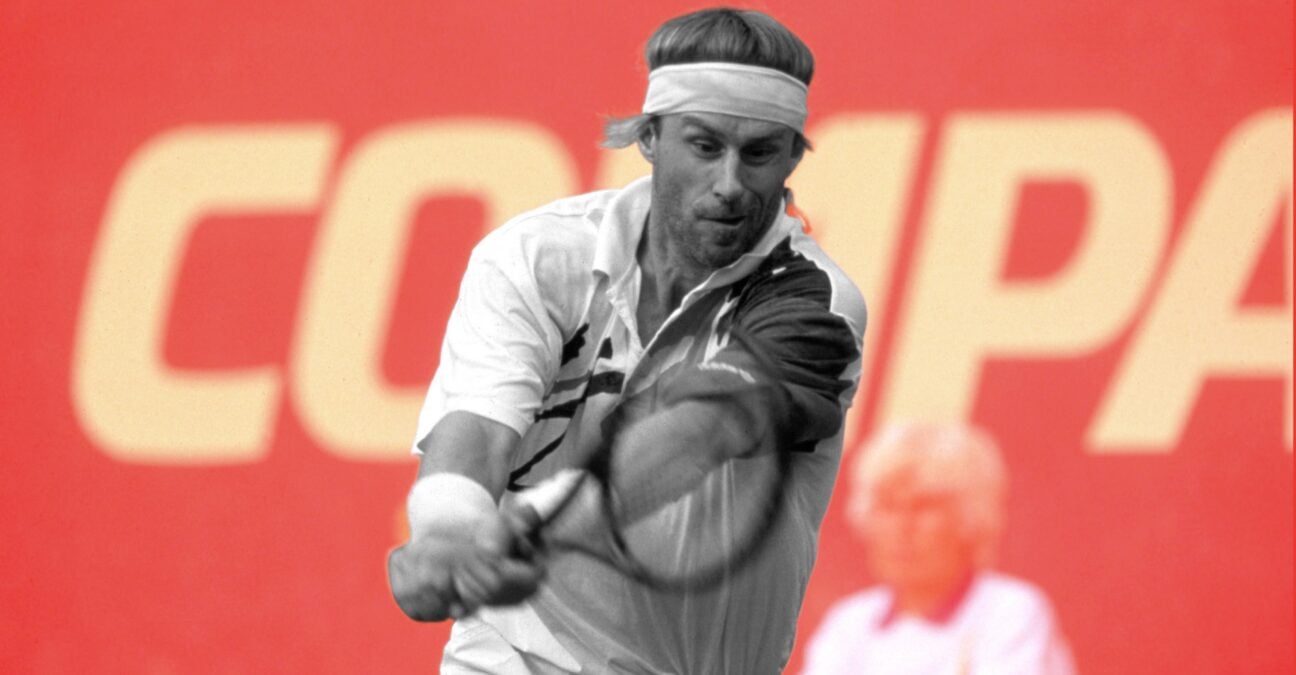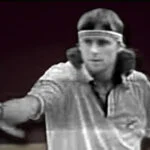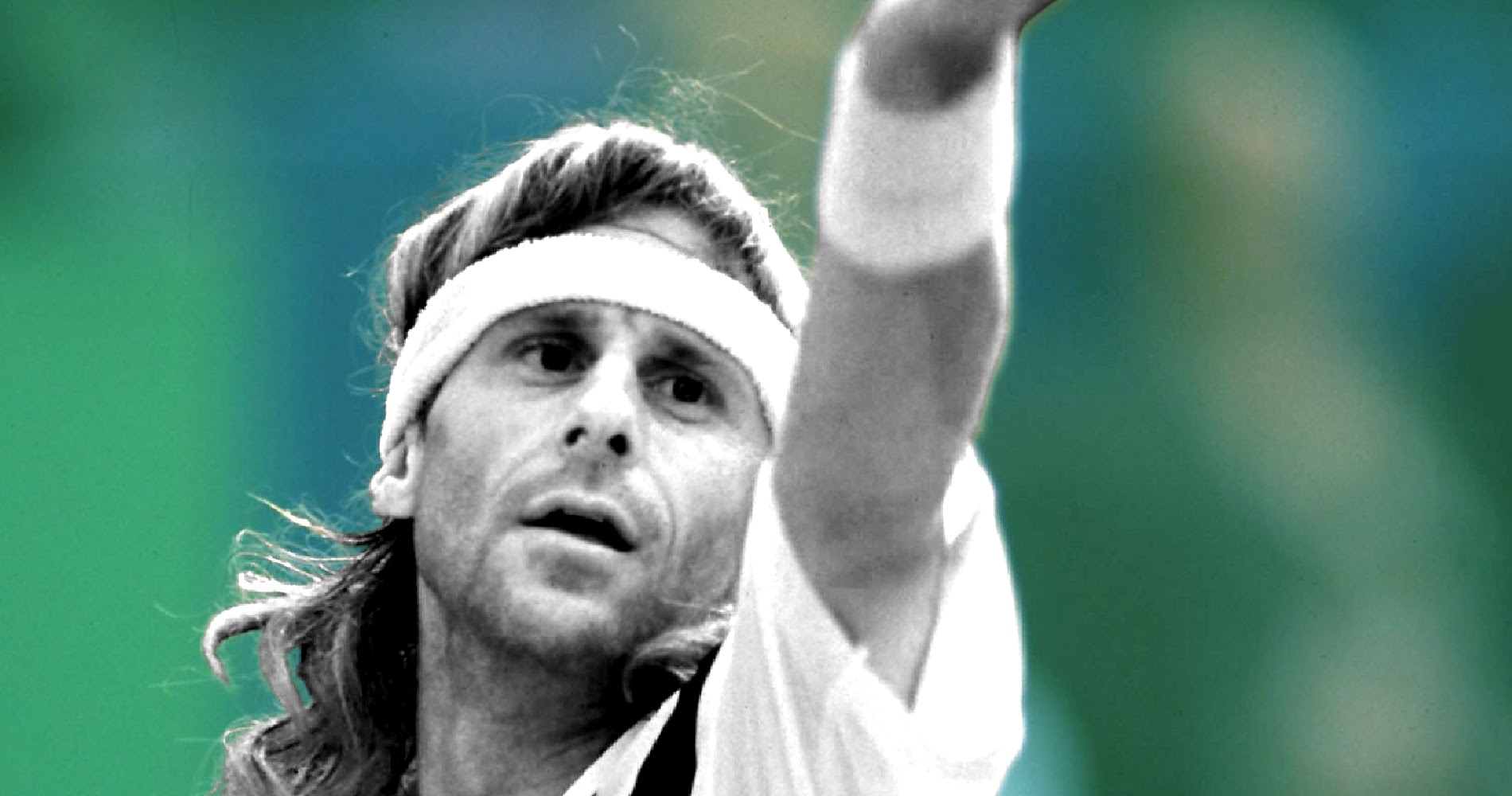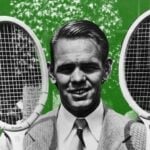April 23, 1991: The day Bjorn Borg came back on the Tour with his wooden racquet
Every day Tennis Majors takes you back in time to celebrate a great moment in tennis history. Today, we go back to Monte-Carlo, in 1991, to witness how, after being away from tennis for almost 10 years, the great Bjorn Borg attempted an extravagant return to the game with his old-fashioned wooden racquet
 Bjorn BORG – TENNIS – veteran compaq largeur revers action
Bjorn BORG – TENNIS – veteran compaq largeur revers action
What happened exactly on that day
On this day, April 23, 1991, at the Monte-Carlo Open, tennis legend Bjorn Borg attempted the most extravagant and at the same time long-awaited come-back, eight years after having announced his retirement. Equipped with antiquated wooden racquets, Borg was heavily defeated by world No 52 Jordi Arrese (6-2, 6-3). It was the first of 12 losses which Borg would face in the following years, failing to score a single win before retiring once and for all in 1993.
The players involved: Bjorn Borg and Jordi Arrese
- Bjorn Borg, ice-cool Swede, coming out of retirement
Bjorn Borg, born in 1956, was the champion who changed the game of tennis forever. His unprecedented stardom and his numerous successes were the main reason why tennis became such a popular sport in the 1970’s. His game style, which involved a lot of topspin and a two-handed backhand, was revolutionary and would be copied all around the world. His nickname “Ice Borg” reflected his attitude on the court: he seemed to have his emotions under control at all times.
Borg started playing tennis as a nine-year old. By the age of 15, he was already a member of the Swedish Davis Cup, and, for his first appearance in the competition, he won his singles match against New Zealander Onny Parun. He turned professional the next year, in 1973, before even turning 17, and soon he reached the final in Monte-Carlo, where he was defeated by Ilie Nastase (6-4 6-1 6-2). His domination of the game started in 1974, when, at the age of 18, he claimed his first Grand Slam at Roland-Garros, becoming at the time the youngest ever French Open champion. Only one player has ever managed to defeat Borg in Paris: Adriano Panatta, from Italy, who beat him in 1973 and 1976. Otherwise, the Swede remained undefeated in Paris where he triumphed six times (1974, 1975, 1978, 1979, 1980, 1981). He proved himself almost invincible at Wimbledon, where he claimed five consecutive titles (1976-1980), until, in 1981, John McEnroe became the first man to beat him at the All England Club, since Arthur Ashe in 1975. As Bjorn Borg had attended the Australian Open only once, in 1974, it was considered that the only major title he had never claimed was the US Open, where he finished runner-up four times, twice to Jimmy Connors (1976, 1978) and twice to John McEnroe (1980, 1981).

The constant attention and pressure eventually made him burn out and he put an end to his professional career at the age of 26, holding 11 Grand Slam titles, having already won 64 tournaments and held the world No 1 spot for 109 weeks.
- Jordi Arrese, clay-court star from Spain
Jordi Arrese, from Spain, was born in 1964. He was a typical Spanish clay court specialist: he had claimed his two ATP titles on red dirt, in 1990, in San Remo and Prague. The same year, he obtained his best Grand Slam result, reaching the third round at Roland-Garros, where he was defeated by Andrei Chesnokov (7-5, 6-4, 6-2), and he climbed as high as world No 32. In April 1991, he was ranked 52nd in the world.
The place: Monte-Carlo Country Club
Located at the top of the Rocher de Monaco, with a unique perspective on the Mediterranean Sea, the Monte-Carlo Country Club hosted one of the oldest international tennis tournaments since 1928. Usually considered as the start of the clay-court season, it was a part of the Masters 1000 category. Amongst its former champions, there was a long list of clay-court terrors, such as Bjorn Borg, Guillermo Vilas, Mats Wilander and Ivan Lendl.
The facts: Borg way off the pace
In 1991, before the prestigious Monte-Carlo Open began, the word spread that, after eight years away from the Tour, the great Bjorn Borg was finally coming back to the game.
The Swedish legend, who had faced several disappointments in business and in romance in the 1980s, had been practicing seriously since August 1990. However, although he was slowly getting back in shape, no one knew that he had decided to attempt an actual come-back on the Tour. Thus, it was a great surprise when the Monte-Carlo organisers announced that they had awarded a wild card to Bjorn Borg. Fellow Swede Jonas Svensson, world No 10 at the time, who had hit several times with the 11-time Grand Slam champion, later told Sports Illustrated that he learned the news in the paper.
In the days before the tournament, Borg practiced ceaselessly, with great players such as Goran Ivanisevic or Boris Becker. Even though the former world No 1 had drawn Jordi Arrese, a clay-court specialist who was ranked only 52 in the world, none of the other players thought Borg was going to win.
“He hits with no pressure,” stated Becker, while Svensson explained himself a little more: “After so many years gone, we don’t expect much, unless Arrese chokes or flips out because he’s playing Bjorn Borg. No, I don’t think Bjorn can win.”
Despite the unusual attention drawn on him, Arrese didn’t choke; however, he knew he was going to play a role in a moment that would live in tennis history. “It was a very moving moment, one that will stay in my heart forever,” the Spaniard later explained. “I see that they want Bjorn back.”

However, although the crowd was obviously excited to see Borg playing again, it soon appeared that the Swede, now 35, should have probably traded his wooden racquets for some more modern and powerful equipment. Although he was able to engage in baseline rallies, his shots lacked power and depth – but most of all, Borg, who was known for his legendary consistency, was now making mistakes. In total, he made no fewer than 38 errors, and, as Svensson had predicted, he was no threat for Arrese, who easily prevailed, 6-2, 6-3 in one hour and 28 minutes.
“I lost, but I enjoyed competing again,” said Borg at the time, in the press conference. “I’m not surprised. I know what I have to work on. I have to play more matches, play more points. It’s very difficult to come back after eight years and play great tennis in your first match.”
However, years later, in 2007, in an interview with The Guardian, Borg would admit that he didn’t really believe in his own chance to get back to the top.
“I just wanted to play tennis again. (…) I was living in Monte Carlo. I played no practice, no exhibitions, I just kind of turned up. (…) It was madness; I knew that. I knew I was not playing well. But I can’t explain it except to say I wanted to play. One or two years later Jimmy Connors started the senior circuit. If they’d had that in ’91, I would have done that instead. As it was, I went to Monte Carlo.”
What next: Borg plays his final match in 1993
In 1992, the formerly unbeatable Borg would play eight tournaments without winning a single set.
In 1993, he would only appear twice, at San Francisco (lost to Jaime Oncins, world No 46, 6-4, 6-7, 6-4) and in Zaragoza (defeated by João Cunha-Silva, No 113, 6-1, 5-7, 7-5).
Bjorn Borg would play the final match of his failed return to the game at the Moscow Kremlin Cup, in 1993. Defeated by Alexander Volkov, from Russia, after missing a match point (4-6, 6-3, 7-6), the Swedish legend would finally call it a day. In two years and 12 tournaments, the 11-time Grand Slam champion didn’t manage to win a single match. Borg would often compete on the Senior Tour throughout the 1990s.
In the 2000s, he would once again puzzle his peers by announcing that his Wimbledon trophies were on sale at an auction. Many other tennis stars would react negatively to this announcement and would eventually convince him to buy back his trophies. In 2017, he would reappear on the court as the captain of the European team at the Laver Cup, a position he still holds.
Jordi Arrese would be defeated in the following round by Goran Ivanisevic (7-6, 7-6). He would obtain his lost remarkable result at the 1992 Olympic Games, in Barcelona, where he would clinch a silver medal, defeated in the final by Marc Rosset (7-6, 6-4, 3-6, 4-6, 8-6).












